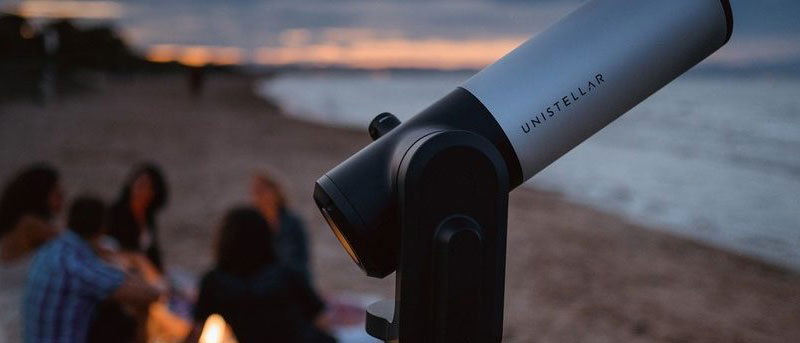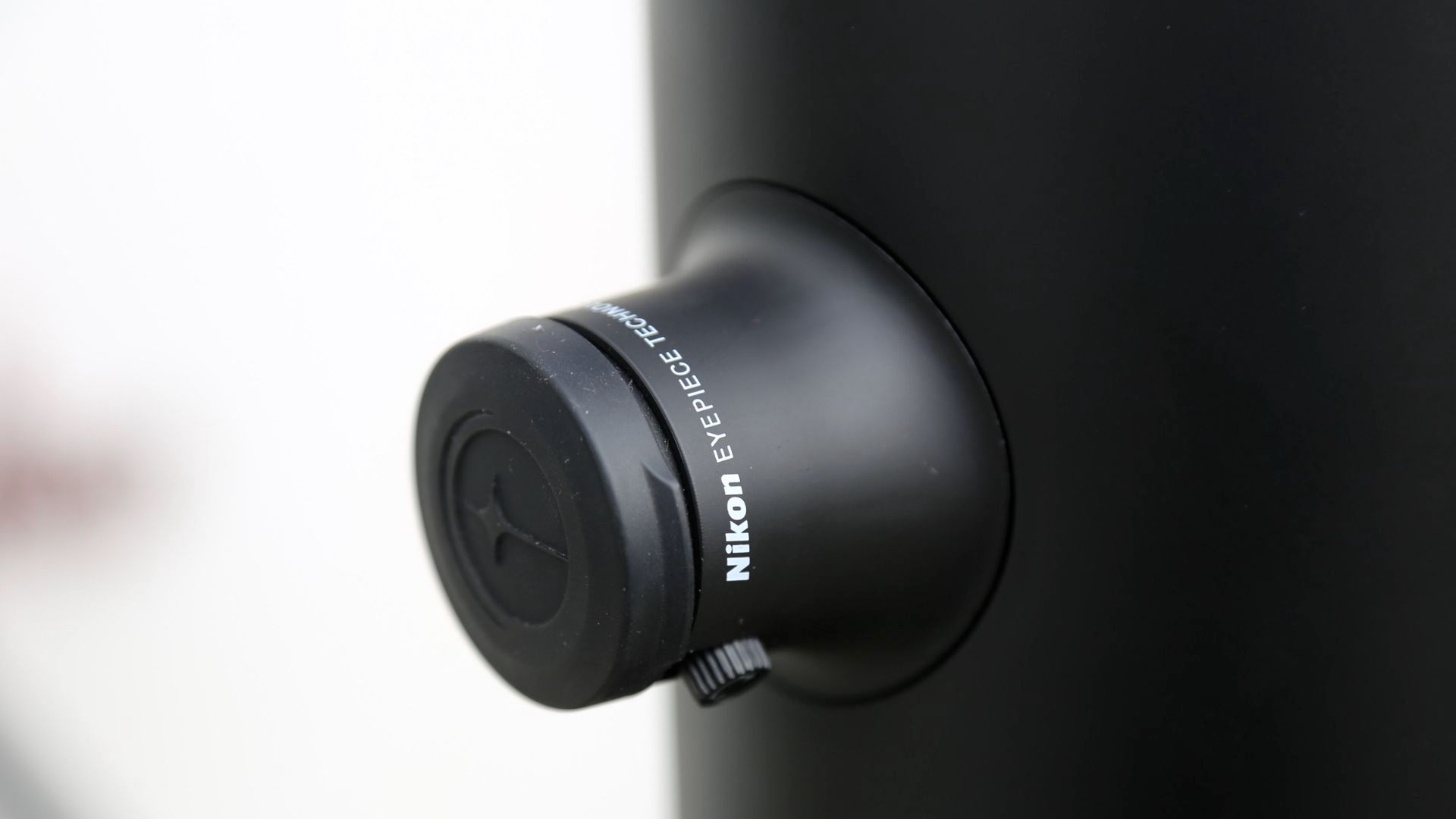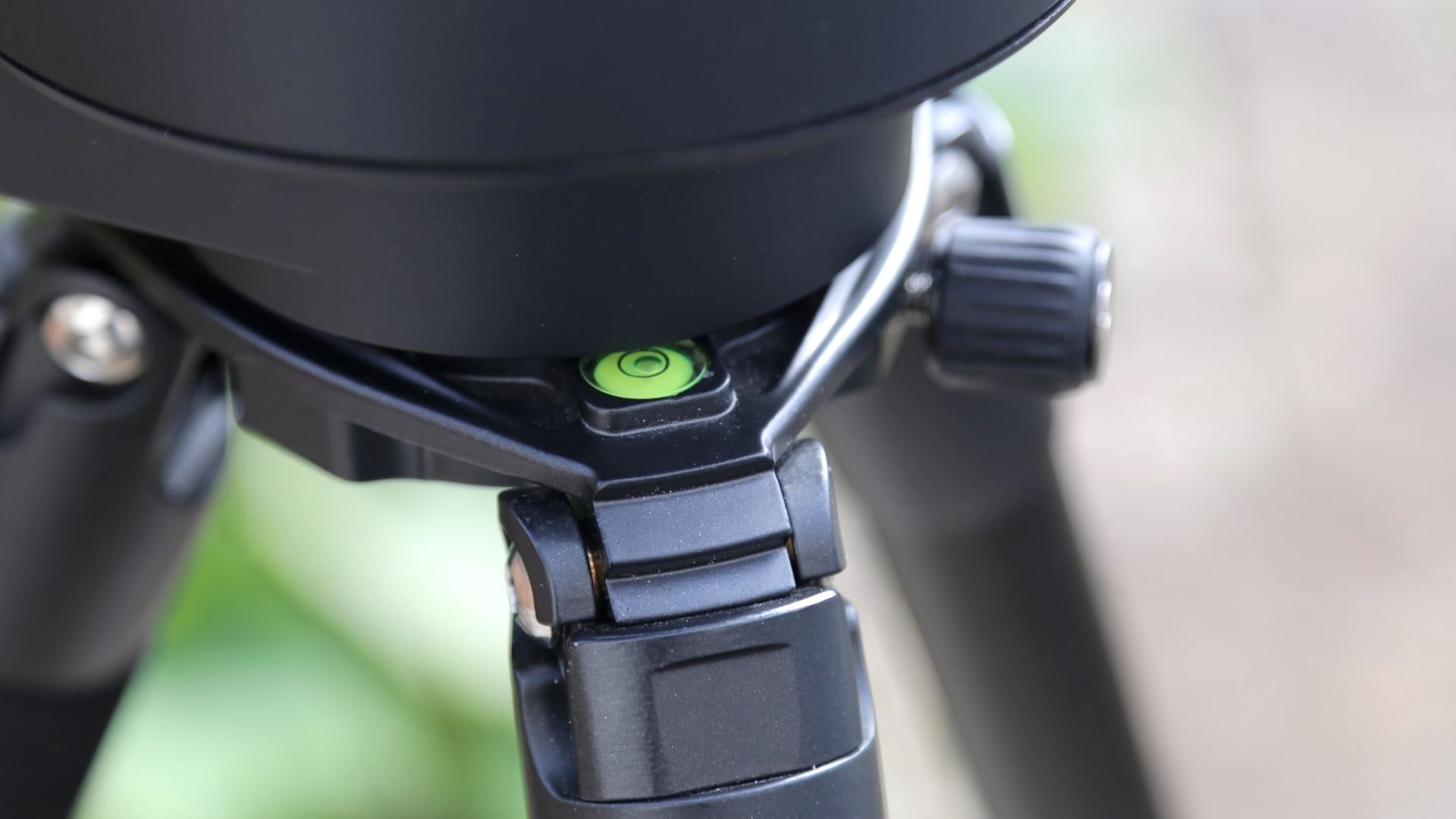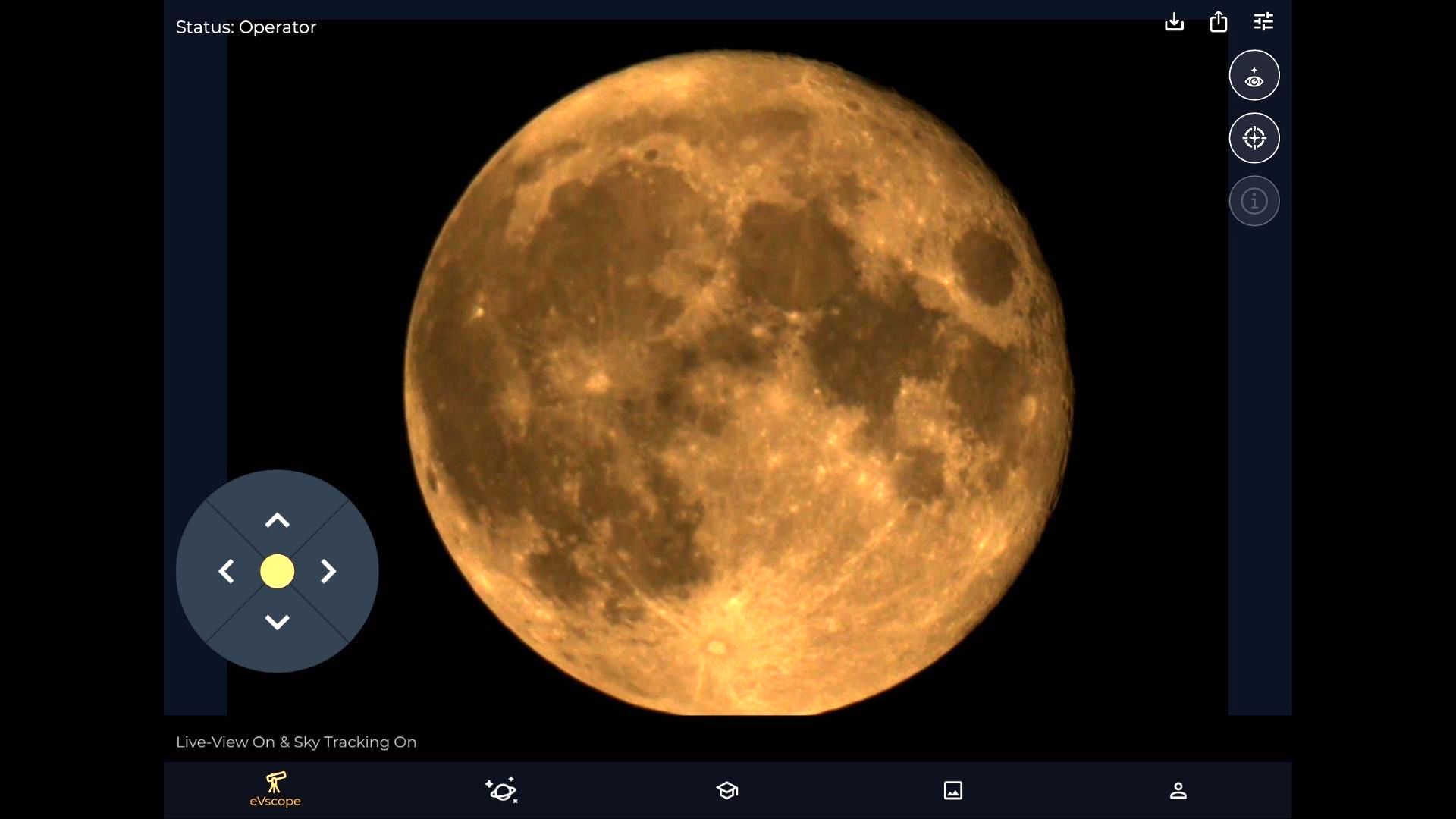Digital Camera World Verdict
The Unistellar eVscope 2 is an impressive, if pricey addition to the ‘smart’ telescope market brings an excellent Nikon electronic eyepiece, higher resolution and more contrasty deep sky images, and an all-important wider field of view that full-screens the Moon.
Pros
- +
Easy to set-up
- +
Works well in cities
- +
7.7 megapixel images
- +
Excellent quality Nikon eyepiece
- +
Comfortable backpack
Cons
- -
Very expensive
- -
Slewing can be slow
- -
Reduced battery life
Why you can trust Digital Camera World
The Unistellar eVscope 2 is a hint that smart telescopes are the future of astronomy. Why? Light pollution is the future for humanity. Most of us can’t see anything but the brightest of stars from our homes and yet interest in the night sky is on the increase. Cue the eVscope 2, the latest smart telescope from Marseille-France-based company Unistellar that successfully overcomes the scourge of light pollution and does it with a little help from Nikon.
Controlled via an app on a smartphone or tablet, this update on the original eVscope is built around a new Sony IMX347 CMOS image sensor. That makes this 4.5-inch reflector telescope as much about astrophotography as amateur astronomy, presenting 7.7 megapixel images to anyone in its vicinity holding a smartphone or tablet hosting the Unistellar app.
Specifications
Optical design: Reflector
Aperture: 114mm
Focal length: 450mm
Focal ratio: F/4
Magnification: x200
Mount: Alt-Azimuth
Resolving power: 2 arc seconds
Limiting stellar magnitude: 18
Battery life: 10 hours
Weight: 9kg
Key features
Unlike the company’s recent eVscope eQuinox, here the images are also funnelled to an all-new Nikon Electronic Eyepiece. It’s excellent – a vast improvement on the original eVscope – and hosts rich, contrasty images of stars, nebulae and galaxies against a more convincing blackness of space.
It does this using its ‘Enhanced Vision’ technology. A tried-and-tested astrophotography trick, ‘Enhanced Vision’ sees the eVscope’s onboard computer imaging an object every four seconds and stacking the results, constantly refreshing and improving the composite image displayed via the app and through the eyepiece. In doing so the eVscope 2 goes way beyond your average backyard telescope, which when used under light-polluted light skies can muster views of very little beyond the Moon and planets.
However, one of the few disappointments about the original eVscope was that it couldn’t quite fit the Moon into its field of view. That’s corrected on the eVscope 2, which has a slightly wider field of view at 34 arc minutes compared to the 30 arc minutes of its predecessor.
That may not sound like much of an upgrade, but it makes a huge difference. For example, instead of only using the eVscope 2 on dark, moonless nights you can now position outside and get fabulous, fullscreen images of the Moon itself. We tried this during the night of the rise of September’s ‘Harvest Moon’ and got some excellent views as it rose above the eastern horizon.
The best camera deals, reviews, product advice, and unmissable photography news, direct to your inbox!
Performance
It's not just lunar photography that's improved here. It’s much the same for a few other key sights that are simply too large for the original eVscope to get a good look at. Chiefly, that means the stunning spiral Andromeda Galaxy (M31), whose core is about 30 arcminutes wide. The eVscope 2 gets eyes-on properly this time, though it’s best to leave it on ‘enhanced vision’ for 20 minutes or so before you start to see dust lanes in its spiral structure.
It’s worth noting that the atmospheric conditions make a huge difference when taking astronomical photographs, so if the eVscope fails to get sharp views one night, take it out the next night. That alone can make a huge difference. So can light pollution, though it’s the light of a bright Moon that you need to worry about the most (though you can reduce its interference by slewing to objects on the opposite side of the night sky… though that does require some familiarity with the constellations).
Setting-up the eVscope is as easy as ever, with the ‘Autonomous Field Detection’ software – a mash-up of a built-in planetarium, the GPS on your smartphone and some clever AI-powered star pattern-spotting – automatically calibrating everything. Though you will have to either focus manually on the Moon or learn how to use the lens caps’ built-in Bahtinov Mask to get super-sharp stars (it’s easy enough to do if you follow Unistellar’s YouTube video).
The jump in pixels and the slightly higher resolution images on the eVscope 2 means it now comes with 64GB of onboard storage (the eVscope had 12GB). The only other physical difference between old and new is that this new version has a quoted battery life of 10 hours to the original eVscope’s 12 hours, which is down to the jump in processing power.
Like its predecessor, the eVscope runs off a built-in battery that can be topped-up using a portable battery via a USB-C cable. It could do with a fold-out shelf to rest that battery. Since it doesn’t have one, we’d recommend using a long USB-C cable to prevent tangles.
Verdict
With an excellent new eyepiece, higher resolution views and a new ability to get the whole of the Moon and the Andromeda Galaxy into the frame, the eVscope 2 contains some useful upgrades. Easy to use and impressive under light-polluted night skies, it’s a slick but also an expensive way into hassle-free astrophotography and astronomy, at $4,199 / £3,399.
Read more:
• Best telescopes for astrophotography
• Best binoculars
• Best star tracker mounts
• Best light pollution filters
• Best astrophotography gear

Jamie has been writing about photography, astronomy, astro-tourism and astrophotography for over 15 years, producing content for Forbes, Space.com, Live Science, Techradar, T3, BBC Wildlife, Science Focus, Sky & Telescope, BBC Sky At Night, South China Morning Post, The Guardian, The Telegraph and Travel+Leisure.
As the editor for When Is The Next Eclipse, he has a wealth of experience, expertise and enthusiasm for astrophotography, from capturing the moon and meteor showers to solar and lunar eclipses.
He also brings a great deal of knowledge on action cameras, 360 cameras, AI cameras, camera backpacks, telescopes, gimbals, tripods and all manner of photography equipment.







